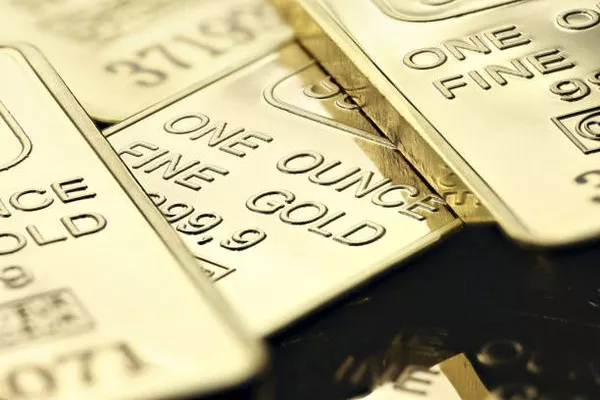In the ever-changing landscape of financial markets, investors are constantly seeking insights into the trajectory of precious metal prices. Gold and silver, traditionally regarded as safe-haven assets, have experienced fluctuations that prompt questions about how low these metals can go. This article aims to delve into the factors influencing the current state of gold and silver prices, examining both historical trends and contemporary market dynamics to offer a comprehensive analysis of their potential bottom.
Historical Context:
To understand the potential bottom for gold and silver, it is essential to consider the historical context that has shaped their market dynamics. Traditionally, these precious metals have been sought after during times of economic uncertainty, acting as a hedge against inflation and currency devaluation. However, their prices are not immune to market forces, and historical trends reveal periods of both surges and declines.
Over the past few decades, gold and silver prices have experienced significant volatility, influenced by factors such as global economic conditions, geopolitical events, and central bank policies. For instance, during the 2008 financial crisis, gold prices soared as investors sought refuge from the turmoil in traditional financial markets. Similarly, silver prices witnessed substantial gains during certain periods of economic uncertainty.
Current Factors Influencing Gold and Silver Prices:
As of [current date], several factors are contributing to the ongoing fluctuations in gold and silver prices. It is crucial to analyze these factors to make informed predictions about the potential bottom for these precious metals.
Interest Rates and Central Bank Policies:
Central bank policies, particularly those related to interest rates, play a pivotal role in determining the attractiveness of gold and silver as investment options. When interest rates are low, the opportunity cost of holding non-interest-bearing assets like precious metals diminishes, making them more appealing to investors. Conversely, higher interest rates can divert funds towards interest-bearing assets, leading to a decrease in demand for gold and silver.
Global Economic Conditions:
The state of the global economy has a direct impact on the demand for precious metals. Economic downturns and uncertainties often drive investors towards safe-haven assets, boosting the prices of gold and silver. Conversely, periods of economic growth and stability may lead investors to opt for riskier assets, causing a decline in demand for precious metals.
Inflation and Currency Movements:
Inflation and currency fluctuations are crucial factors influencing the value of gold and silver. As hedges against inflation, these metals tend to perform well during periods of rising prices. Additionally, changes in currency values can affect the international competitiveness of these metals, impacting their prices in the global market.
Geopolitical Events:
Geopolitical tensions and uncertainties can trigger a flight to safety, benefiting gold and silver prices. Events such as trade disputes, political unrest, or conflicts can create an environment conducive to precious metal investments. Monitoring geopolitical developments is essential for predicting short-term movements in gold and silver prices.
Analyzing the Potential Bottom:
While predicting the exact bottom for gold and silver prices is a challenging task, a careful analysis of the aforementioned factors can provide valuable insights.
Technical Analysis:
Utilizing technical analysis, investors can examine historical price charts, identify trends, and predict potential support levels. Key technical indicators, such as moving averages and trendlines, can assist in gauging the momentum and potential reversal points for gold and silver prices.
Market Sentiment:
Investor sentiment plays a crucial role in determining market trends. Monitoring sentiment indicators, such as the Commitment of Traders (COT) report, can provide insights into whether the market is leaning towards bullish or bearish sentiments. Extreme positions in sentiment often precede market reversals.
Fundamental Factors:
Fundamental analysis involves evaluating the underlying factors that influence the intrinsic value of an asset. Consideration of factors like supply and demand, production costs, and industry trends can provide a holistic view of the long-term prospects for gold and silver.
Global Economic Outlook:
Keeping a close eye on the global economic outlook is essential for understanding the broader market dynamics. Assessing indicators such as GDP growth, employment rates, and consumer confidence can help anticipate shifts in investor behavior towards precious metals.
Conclusion:
In conclusion, predicting the potential bottom for gold and silver prices requires a multidimensional approach that considers historical trends, current market dynamics, and future economic outlooks. While these precious metals have historically served as safe-haven assets, their prices are subject to the ebb and flow of global economic conditions, interest rates, and geopolitical events.
Investors should remain vigilant and continuously monitor the evolving landscape to make well-informed decisions. Utilizing a combination of technical analysis, fundamental factors, and an understanding of market sentiment can provide a more comprehensive perspective on the potential trajectory of gold and silver prices. As financial markets continue to evolve, adaptability and a thorough understanding of the factors influencing precious metal prices will be key for investors navigating the depths of these ever-changing markets.


